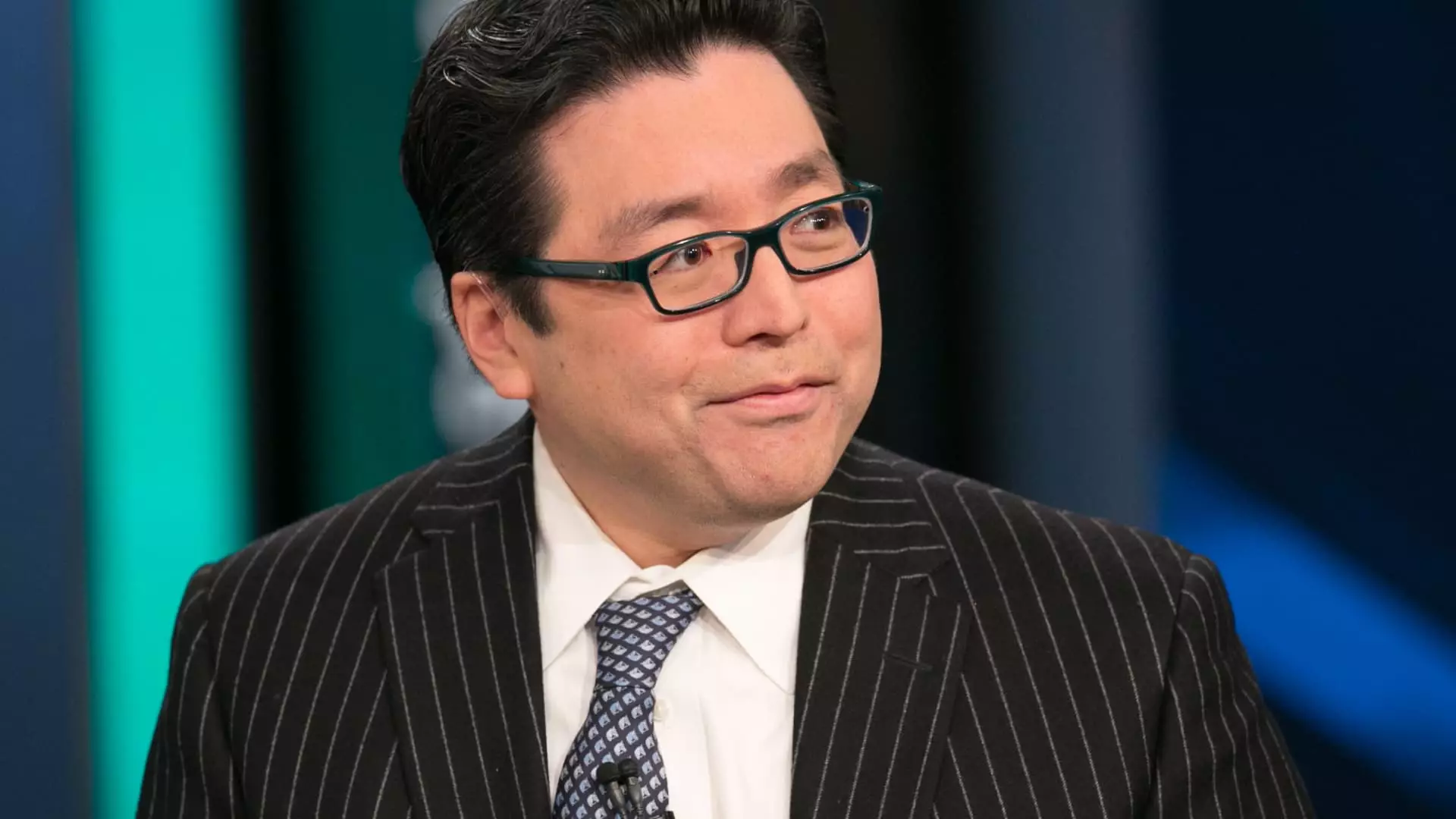BitMine Immersion Technologies, a relatively obscure bitcoin mining company, has suddenly captured market attention by charting an audacious new path: making Ethereum (ETH) its primary treasury reserve asset. This shift, announced alongside the appointment of Fundstrat’s Tom Lee as chairman, signals more than just a change in asset allocation—it suggests a potentially transformative but hazardous pivot in identity and strategy. Lee, a notable figure known for his bullish cryptocurrency forecasts, lends the company a high-profile presence, but the fundamental challenges BitMine faces cannot be papered over with star power alone.
Once dismissed as a small player with a market capitalization of barely $26 million and shares that plunged 45% year-to-date, BitMine’s announcement of a $250 million private placement to acquire ether represents a bold—and perhaps reckless—stride into uncharted waters. By prioritizing ETH over bitcoin in treasury management, BitMine is stepping into a more complex and volatile dimension of crypto finance, diverging from the relatively established digital gold narrative bitcoin holds.
Ethereum as Treasury Reserve: Visionary or Overreach?
Tom Lee’s rationale for the move revolves around the meteoric rise of stablecoins and the pivotal role Ethereum plays in their ecosystem. Ethereum’s blockchain undoubtedly dominates the processing of stablecoin transactions, offering a logical backbone for what Lee describes as “the ChatGPT of crypto”—stablecoins that drive rapid adoption across users and financial service providers alike. This growth story positions ETH not just as a speculative asset but as a utility-driven network currency with tangible transactional relevance.
However, equating this utility alone with a sound treasury reserve strategy overlooks critical risks. Ethereum’s price volatility frequently surpasses that of bitcoin, exposing BitMine to amplified financial swings. Moreover, as regulators intensify scrutiny over stablecoins and the broader crypto ecosystem, uncertainties may rightfully unsettle ETH’s value proposition. Betting the company’s future largely on Ethereum’s continued dominance and appreciating value feels less like prudent treasury management and more like doubling down on volatility.
The Competitive Crypto Treasury Landscape
BitMine’s ambition echoes a broader trend of companies diversifying crypto holdings beyond bitcoin. SharpLink Gaming and DeFi Development have also adopted strategies centered on ether and Solana tokens respectively, recognizing the value of engaging with more versatile blockchain protocols. Yet, BitMine’s approach bears a certain desperation; it’s a small firm seizing on a trend rather than leading innovation. While MicroStrategy’s bitcoin-per-share metric “BTC Yield” boosted investor confidence by transparently linking treasury holdings to shareholder value, BitMine’s “ETH held per share” metric seems more like an attempt to mimic a successful narrative without having comparable scale or brand trust.
The juxtaposition of Lee’s strategic optimism against BitMine’s lackluster pre-deal performance crafts a precarious balancing act. Investors should ask whether this is a visionary leap forward or an overextended gamble fueled by hype around stablecoins and Ethereum’s current momentum, rather than intrinsic corporate strength.
Center Wing Liberalism Perspective: Navigating Innovation with Caution
From a centrist liberal viewpoint, BitMine’s strategic pivot encapsulates both the promise and perils of rapid innovation in fintech. Supporting technological advancement and embracing progressive financial tools like stablecoins and DeFi is vital for economic dynamism. However, such enthusiasm must be tempered with robust risk management and accountability. BitMine’s maneuver speaks to a hopeful belief in Ethereum’s network effect but risks undermining investor trust if perceived as speculative excess.
Regulators’ caution towards stablecoins reflects the necessity of safeguarding financial stability and consumer protection, a balance that BitMine’s aggressive strategy needs to respect. The company’s fate may ultimately hinge on its ability to integrate innovation with governance and transparency—traits that have eluded many crypto ventures scrambling to capitalize on momentary market trends.

